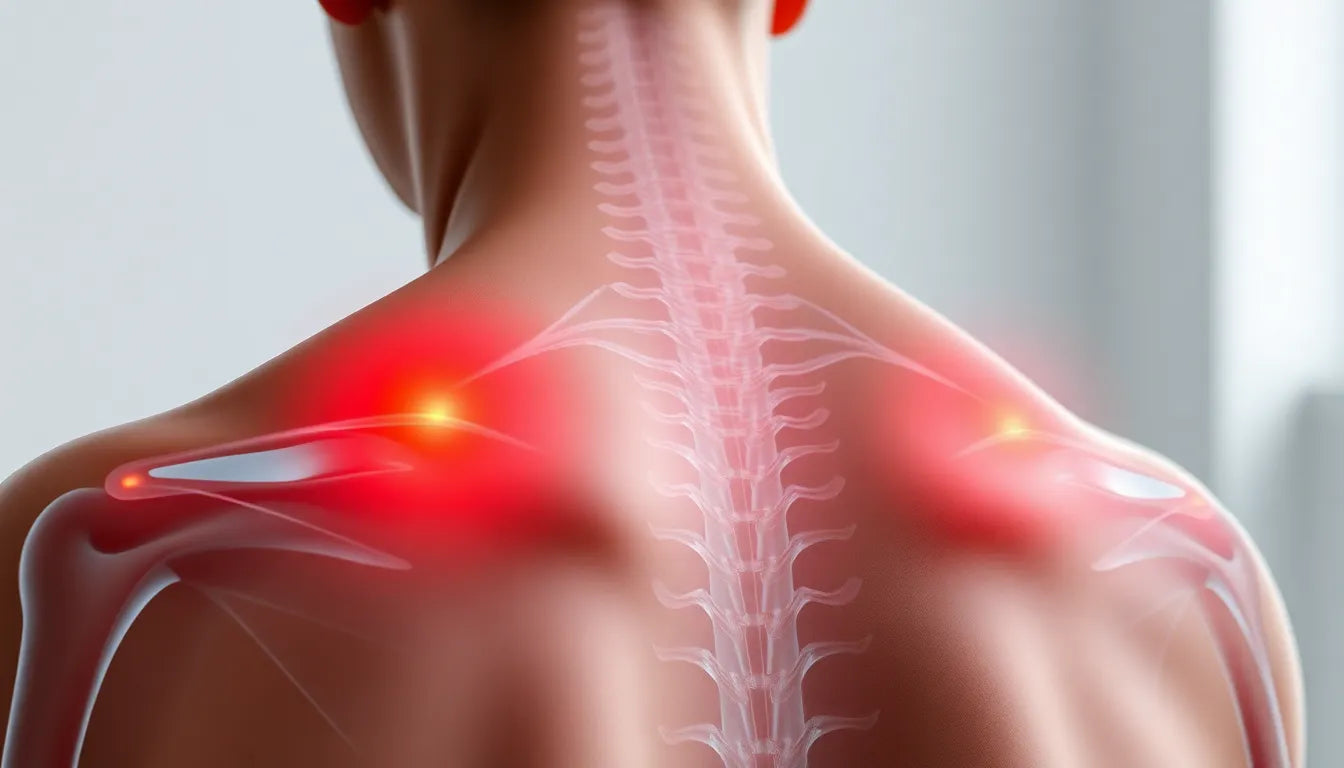Wrist pain, or "ondt i håndled" as it is known in Danish, is a common issue affecting many people, often hindering their ability to perform daily tasks efficiently. This discomfort can range from a mild annoyance to a severe impairment, significantly impacting one's quality of life. Understanding the nature of wrist pain is crucial for addressing it effectively and preventing long-term consequences.
Understanding wrist pain
Wrist pain is typically characterized by discomfort or soreness in the wrist area, which can occur due to various reasons. It is a prevalent condition that affects individuals across different age groups and occupations. The pain can be acute, resulting from a sudden injury, or chronic, developing over time due to repetitive strain or underlying medical conditions. Regardless of its origin, wrist pain can interfere with simple activities such as typing, writing, or even lifting light objects, making it a significant concern for those affected.
Common causes of wrist pain include overuse injuries, repetitive strain from activities like typing or manual labor, and poor ergonomics in the workplace. Conditions such as tenosynovitis, carpal tunnel syndrome, and fractures also contribute to the discomfort experienced in the wrist. These issues often arise from repeated motions or prolonged pressure on the wrist, leading to inflammation and pain.
Importance of addressing wrist pain
Ignoring wrist pain can lead to more severe problems, including chronic pain, reduced functionality, and even permanent damage. When left untreated, minor wrist issues can escalate, affecting not only the wrist but potentially the entire arm and shoulder due to compensatory movements. This can result in a cycle of pain and discomfort that becomes increasingly difficult to manage.
Addressing wrist pain promptly is essential to prevent these complications. One effective approach is incorporating specific exercises and ergonomic aids designed to relieve pain and prevent future occurrences. Exercises can help strengthen the muscles and tendons around the wrist, improving flexibility and resilience. Meanwhile, ergonomic aids, such as wrist supports and specially designed keyboards and mice, can reduce strain and promote proper wrist alignment.
By taking proactive steps to manage wrist pain, individuals can maintain their daily activities without discomfort and avoid the long-term consequences of ignoring this common issue. In the following sections, we will delve deeper into the causes and symptoms of wrist pain, explore initial treatment approaches, and discuss the role of professional treatment in managing this condition.
Common causes and symptoms of wrist pain
Wrist pain, or "ondt i håndled," can arise from various causes, each presenting distinct symptoms that can affect daily life. One of the most prevalent causes is overuse injuries, often resulting from repetitive motions such as typing or manual labor. These activities can lead to conditions like tenosynovitis, where the sheath surrounding a tendon becomes inflamed, causing pain and swelling.
Another common condition is carpal tunnel syndrome, which occurs when the median nerve is compressed as it travels through the wrist. This can result in symptoms such as numbness, tingling, and weakness in the hand. Fractures and sprains, often resulting from falls or direct impacts, also contribute to wrist pain, presenting symptoms like acute pain, swelling, and reduced mobility.
Initial treatment approaches for wrist pain
Addressing wrist pain effectively often begins with rest and immobilization. It's crucial to avoid activities that exacerbate the pain to prevent further injury. Using splints or braces can provide the necessary support, allowing the wrist to heal while maintaining some level of functionality.
Cold therapy is another initial treatment that can help reduce swelling and alleviate pain. Applying ice packs to the affected area for short intervals can be beneficial, especially in the early stages of injury. Additionally, over-the-counter pain relief options, including non-steroidal anti-inflammatory drugs (NSAIDs), can help manage pain and inflammation, making daily activities more manageable.
The role of professional treatment in managing wrist pain
When wrist pain persists despite initial self-care measures, seeking professional treatment becomes essential. Physical and occupational therapy can play a significant role in recovery. Therapists can design customized exercise programs aimed at restoring strength and flexibility in the wrist, which is vital for long-term recovery and preventing future injuries.
Professional ergonomic assessments can also be beneficial, as they help identify and adjust factors in the workplace or daily routines that may contribute to wrist pain. By implementing ergonomic solutions, such as adjusting the height of a desk or using supportive equipment, the risk of recurrence can be significantly reduced.
In cases where conservative treatments do not alleviate the pain, more advanced medical interventions may be necessary. Injections, such as corticosteroids, can provide relief by reducing inflammation in specific areas. In severe cases, surgical options might be considered, particularly for conditions like carpal tunnel syndrome or in the presence of fractures that do not heal properly.
Conclusion: taking proactive steps for wrist health
Understanding the causes and symptoms of wrist pain is the first step toward effective management and prevention. By implementing initial treatment approaches and seeking professional guidance when necessary, individuals can find relief and improve their quality of life. Additionally, integrating ergonomic aids and exercises into daily routines can play a crucial role in maintaining wrist health and preventing future issues.
In the next section, we will explore rehabilitation and preventive exercises, along with ergonomic adjustments that can further aid in managing wrist pain. These strategies are essential for those looking to take proactive steps in ensuring their wrist health and overall well-being.
Rehabilitation and preventive exercises for wrist pain
When dealing with "ondt i håndled," incorporating rehabilitation and preventive exercises into your routine is crucial for recovery and prevention of future issues. Strengthening and flexibility exercises are key components in maintaining wrist health. These exercises not only help restore function but also build resilience in the muscles and tendons surrounding the wrist.
Strengthening and flexibility exercises
Start with gentle wrist stretches to improve flexibility. One effective stretch involves extending your arm in front of you with the palm facing down. Use your other hand to gently press down on the back of the extended hand until you feel a stretch in your wrist and forearm. Hold this position for 15-30 seconds, then switch to the other hand.
For strengthening, wrist curls using light weights or resistance bands can be beneficial. Sit with your forearm resting on a table, palm facing up. Hold a small weight and slowly curl your wrist upwards, then lower it back down. Repeat this motion for 10-15 repetitions on each wrist. Gradual progression and consistency in these exercises are vital for achieving the best results.

37 exercises collected in the ultimate exercise book
E-book with expert-selected exercises for injury prevention, rehabilitation, and physical health.
Ergonomic adjustments
In addition to exercises, making ergonomic adjustments in your workspace can significantly reduce wrist strain. Ensure your keyboard and mouse are positioned at a comfortable height to maintain a neutral wrist position. Consider using a wrist pad to support your wrists while typing, and choose an ergonomic mouse that fits comfortably in your hand.
Ergonomic tools and aids, such as adjustable desks and chairs, can also help create a wrist-friendly environment. By minimizing strain through proper setup and using supportive equipment, you can prevent further injury and maintain wrist health.
Integrating ergonomic aids
Types of aids
Various ergonomic aids are available to help alleviate wrist pain and prevent further injury. Wrist supports, ergonomic keyboards, and specially designed mice are among the most popular options. Wrist supports can stabilize the wrist, reducing movement and allowing for healing. Ergonomic keyboards and mice are designed to promote natural wrist alignment, reducing the risk of strain.
Choosing the right aid
When selecting ergonomic products, consider factors such as your specific needs, the nature of your daily activities, and the severity of your wrist pain. Consulting with a healthcare professional can provide valuable guidance in choosing the right aids tailored to your situation. By selecting the appropriate ergonomic aids, you can enhance comfort and functionality, effectively managing and preventing wrist pain.
Frequently Asked Questions
What are the first steps to take when experiencing wrist pain?
Initially, it is important to rest the wrist and avoid activities that exacerbate the pain. Applying ice can help reduce swelling, and consulting a healthcare professional is recommended for an accurate diagnosis.
How can I tell if my wrist pain is serious?
If you experience persistent pain, swelling, or numbness that does not improve with rest, it is advisable to seek medical evaluation to determine the severity of the condition.
Are there specific exercises to avoid if I have wrist pain?
High-impact or repetitive activities that put strain on the wrist should be avoided until the pain subsides. Focus on gentle stretches and strengthening exercises as recommended by a professional.
How long does it typically take to recover from wrist pain?
Recovery time varies; mild cases may improve within weeks, while more severe cases could take several months. Consistent rehabilitation and professional guidance can aid in a quicker recovery.
Can ergonomic aids completely prevent wrist pain?
While ergonomic aids can significantly reduce the risk of wrist pain, maintaining good posture and incorporating regular exercises are also crucial components in prevention and management.
Kilder
- Nordsjælland Sportsfysioterapi. "Ondt i håndled."
- CPH Osteopati. "Håndledssmerter."
- EFFX. "Ondt i håndled."
- Hafaro. "Smerter i håndled."
- Næstved Kiropraktor. "Symptomer på håndledssmerter."
- PH Danmark. "Seneskedehindebetændelse."
- Gigtforeningen. "Fingre og håndled."
- Sundhed.dk. "Håndleddet - Seneskedebetændelse."


















